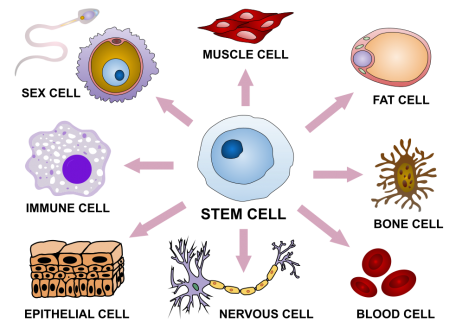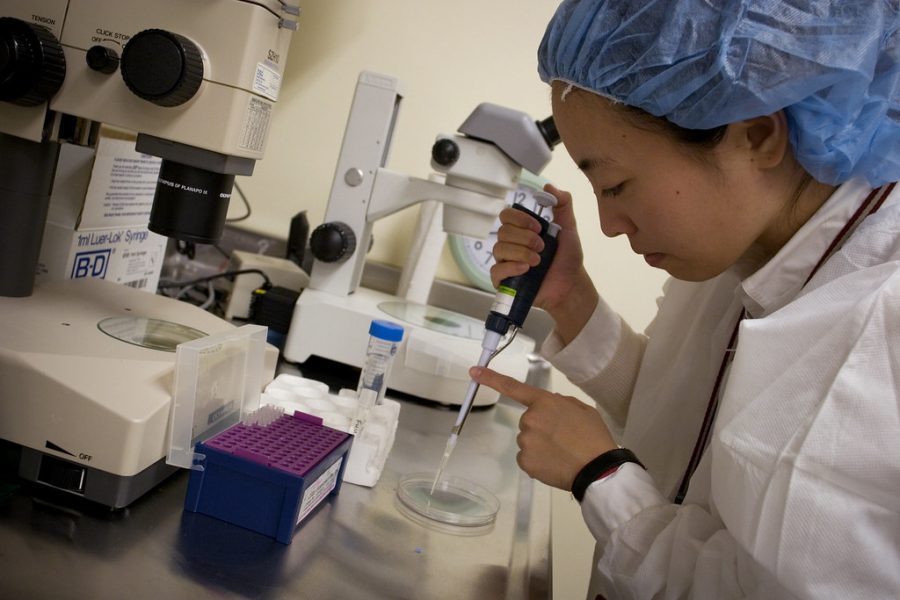Stem Cell Therapy’s role in treating Degenerative Diseases
Degenerative diseases are diseases that progressively damage parts of the body, and result in the death of cells. Some examples include:
1. Parkinson’s disease, which affects the cerebellum (part of the brain relating to movement). This happens when the neurons and cells in the cerebellum impair or die. Parkinson’s disease is usually found in the elderly. Some symptoms include tremors, impaired posture, and balance, loss of automatic movements (such as arms swinging when walking, and even changes in one’s speech).
2. Macular degenerative diseases, where photoreceptor cells in an area of the retina known as the central macula area tend to degenerate and impair and die.

This results in progressive blindness. The photoreceptor cells are what sense light in the retina, and when they absorb photons, they initiate a sequence of electrical signals that are sent along the retina and a nerve connecting the eye and brain known as the “optic nerve” to the brain. This is when an image is created by the brain. To put it in simple terms, the brain puts these different signals from the absorbed light together and creates a basic image by “arranging” the light particles (known as photons). However, this degenerative disease results in blurred, distorted or even completely blank images in some extreme cases.
3. Spinal muscular atrophy, a heritable degenerative disease that stems from a genetic defect in the SMN1 gene, which codes for SMN, a protein necessary for the survival of motor neurons. Without these neurons, the sending of biochemical electric signals, or “messages” between the brain and the skeletal muscles is not possible. This heavily limits the ability to move and can result in unwanted, spontaneous movement such as twitches, or even inability to move certain skeletal muscles, as there is no exchange in these messages between the brain and the muscle.
Although there are several methods to treat these diseases, one that I find especially interesting is stem cell therapy, which I am sure is something you may have heard at some point in time. Stem cell therapy essentially involves the injection of stem cells into the area of cellular impairment or death, into the body of someone suffering from a degenerative disease.
But what are stem cells exactly?
Cells, in general, all serve specific purposes. While some are muscular cells or skin cells, others are stem cells, meaning that they are unspecialized. Their job is to specialize into a specific type of cell, such as a blood cell, when the body needs it.

Therefore, if cells are constantly being lost in the macula of the retina due to a degenerative disease, medical professionals extract stem cells from a variety of sources, and inject the stem cells into the damaged area, so the stem cells can specialize into the cells of that specific area, and in this case, become fully functional specialized retinal cells.
Stem cells can be extracted from several possible places. Some include:
1. From an adult body, blood stem cells are taken from one’s circulating blood, or from blood in an umbilical cord from when a baby is born. The umbilical cord is cryogenically stored (it is frozen) in medical facilities until it is required. Mesenchymal stem cells (cells that can specialize into bone, cartilage, and fibrous connective tissue) can be isolated from bone marrow. Neural stem cells (making up the brain’s cells) have been isolated from the brain and spinal cord.
2. From the human embryo, which provides “embryonic” stem cells. The human embryo is a very early stage of the fetus, around the point in time where it is still just a cluster of unspecialized cells.
3. From amniotic fluid, which envelopes a fetus in a womb to protect it. The fluid contains fetal cells that can make a variety of cell tissue. Although the fluid is normally discarded after the mother has it checked for any chromosomal abnormality in the fetus, it is possible to isolate stem cells from the fluid.
Although I believe that this path of treating these degenerative diseases is most probably the safest, and most efficient, there are some ethical concerns that follow it, specifically regarding the extraction of embryonic and amniotic stem cells.
The main concern is that because the extraction of stem cells from the womb involved the injection of a needle into the stomach, there is a possibility that embryo and blastocysts (a collection of cells that are further along with the development of a fetus) could die, which is a “waste of potential life”. However, I believe that with careful measures and procedures, this risk can be avoided, and the stem cells can be successfully extracted to combat a significantly harmful disease that could have lifelong impacts on one’s life.





